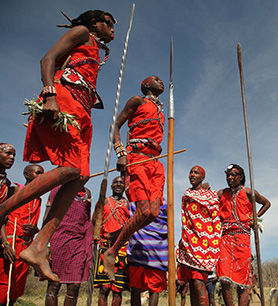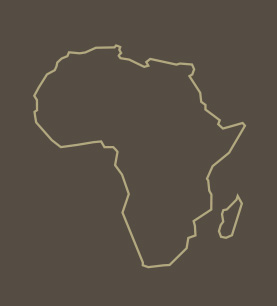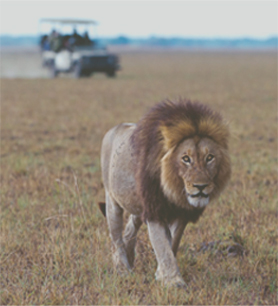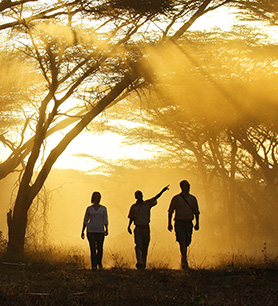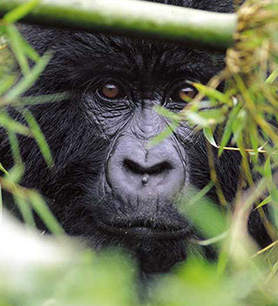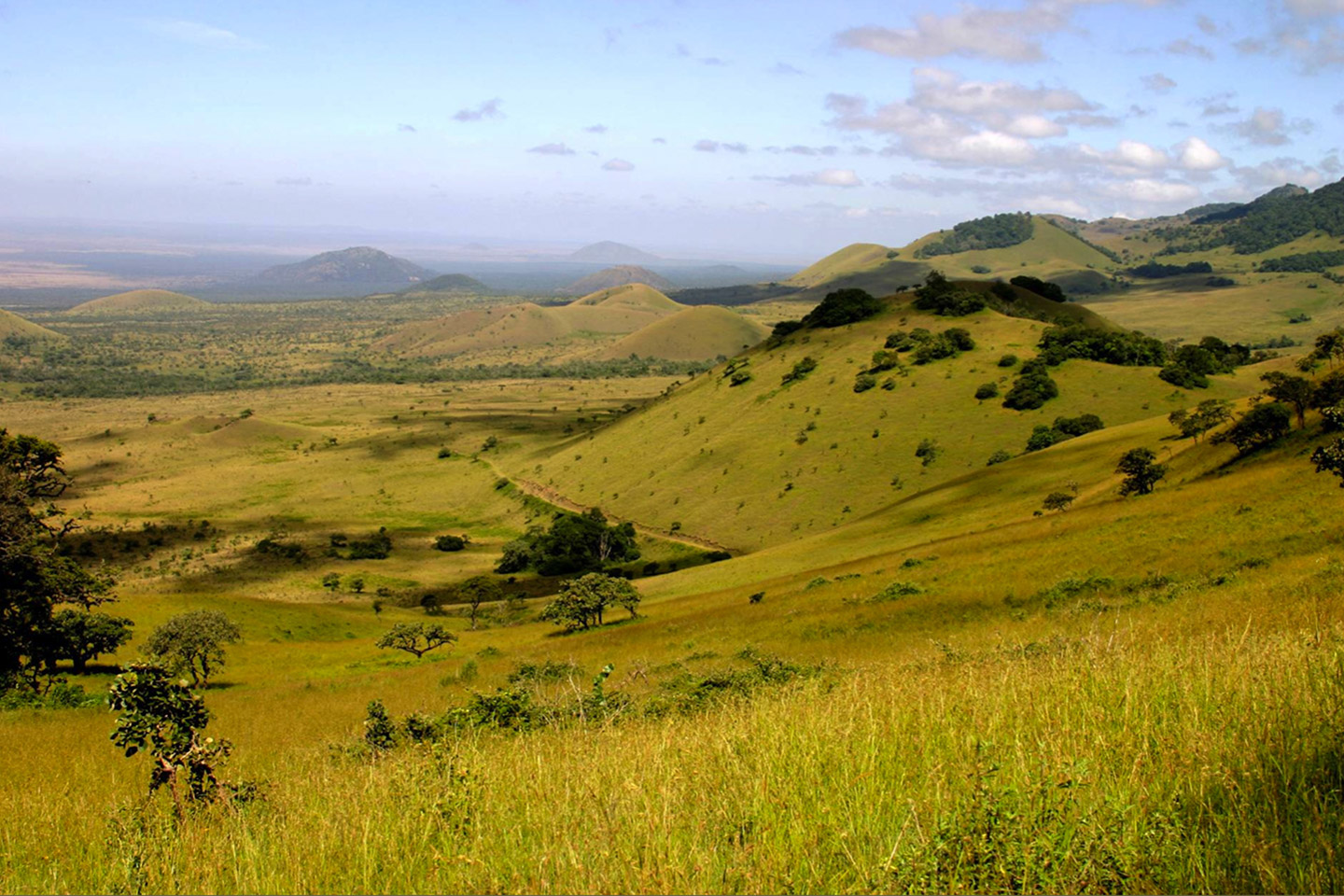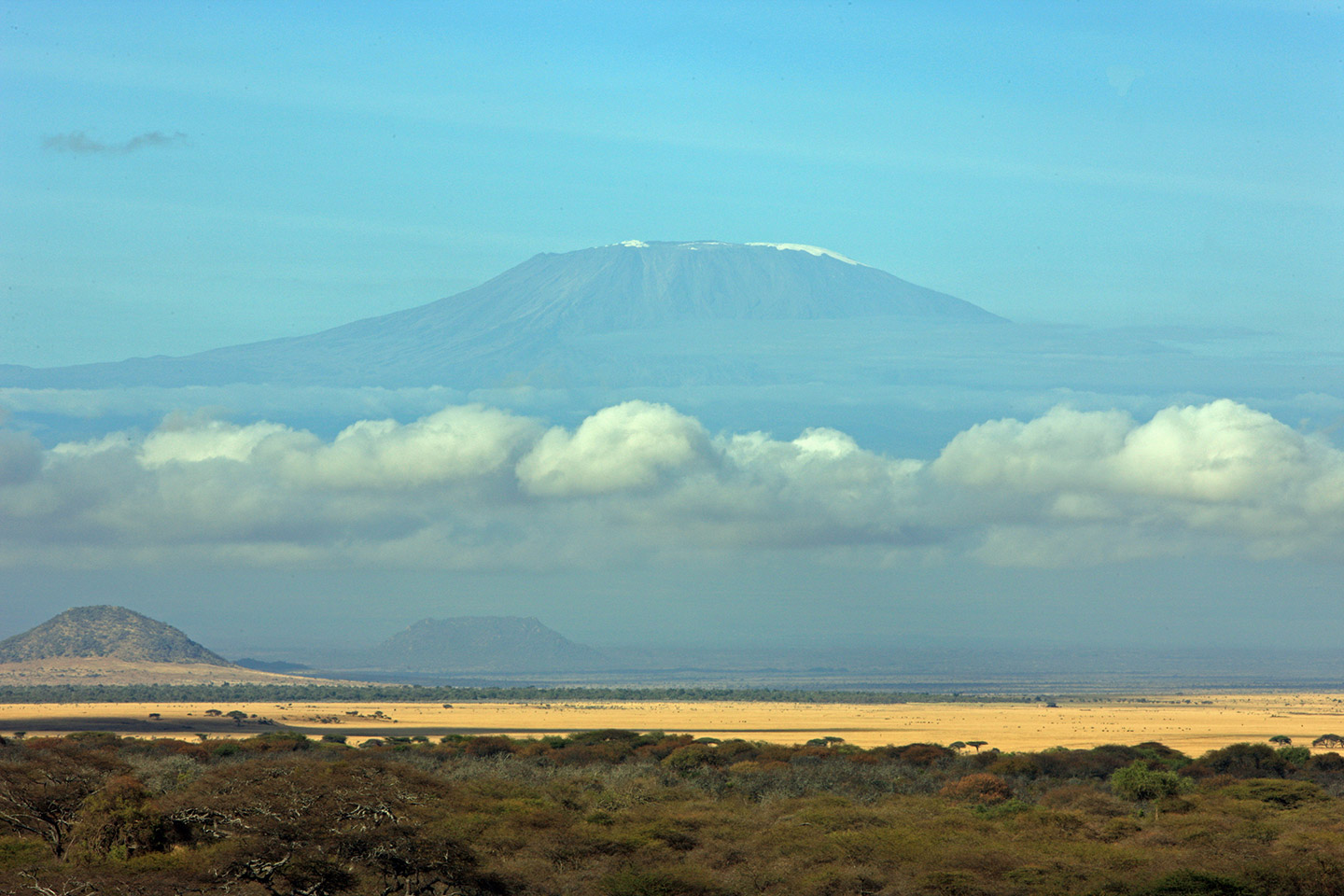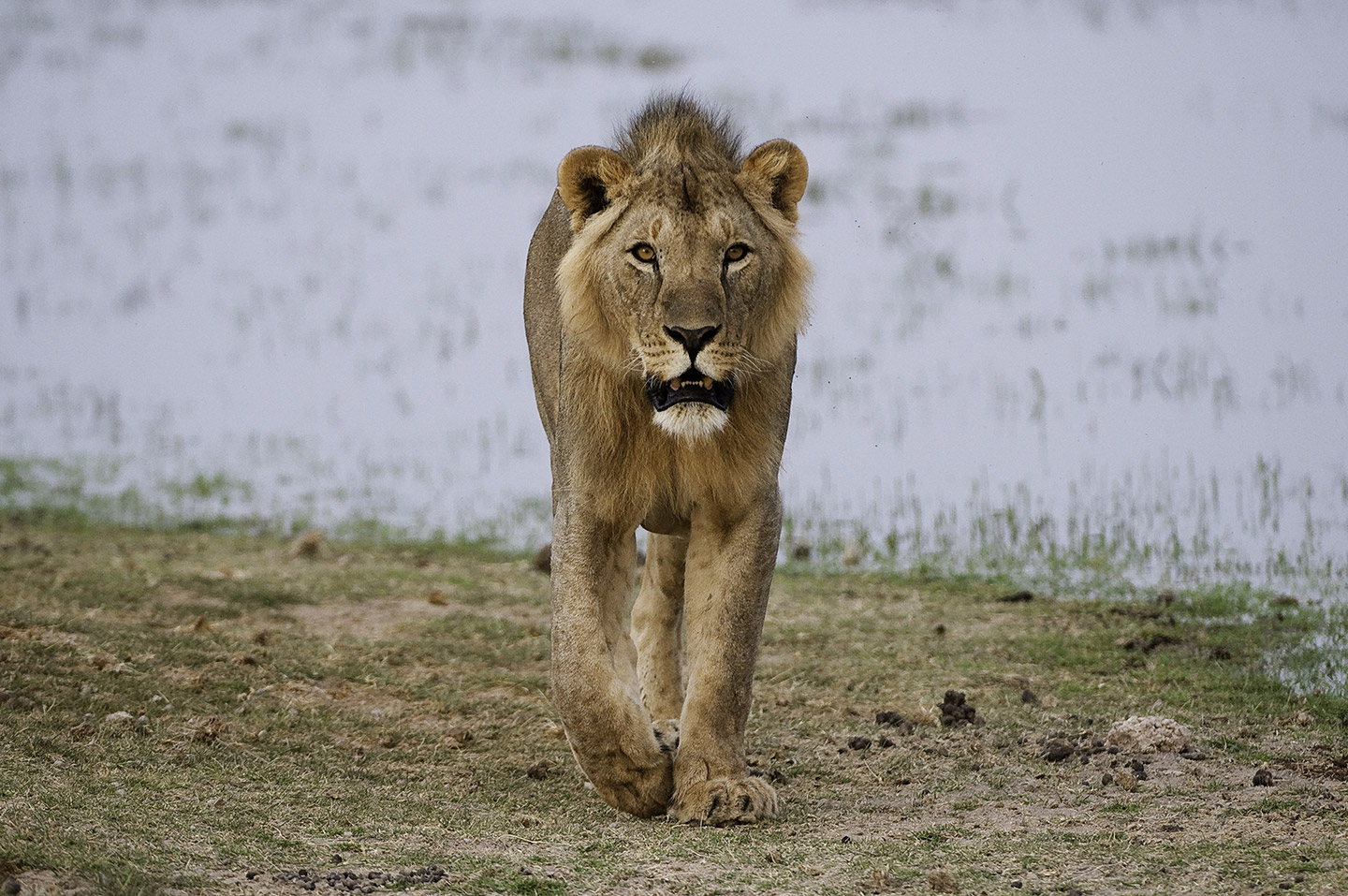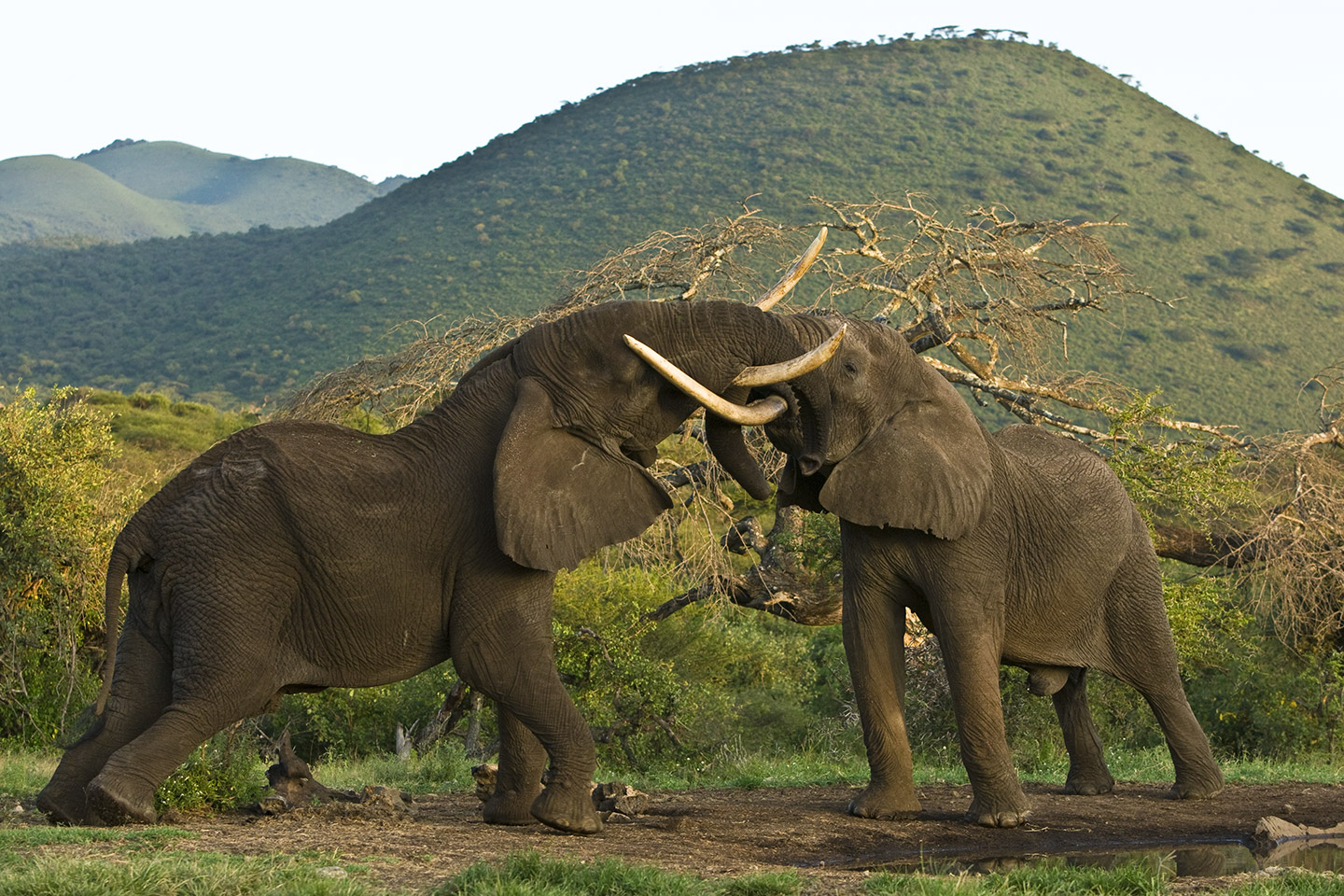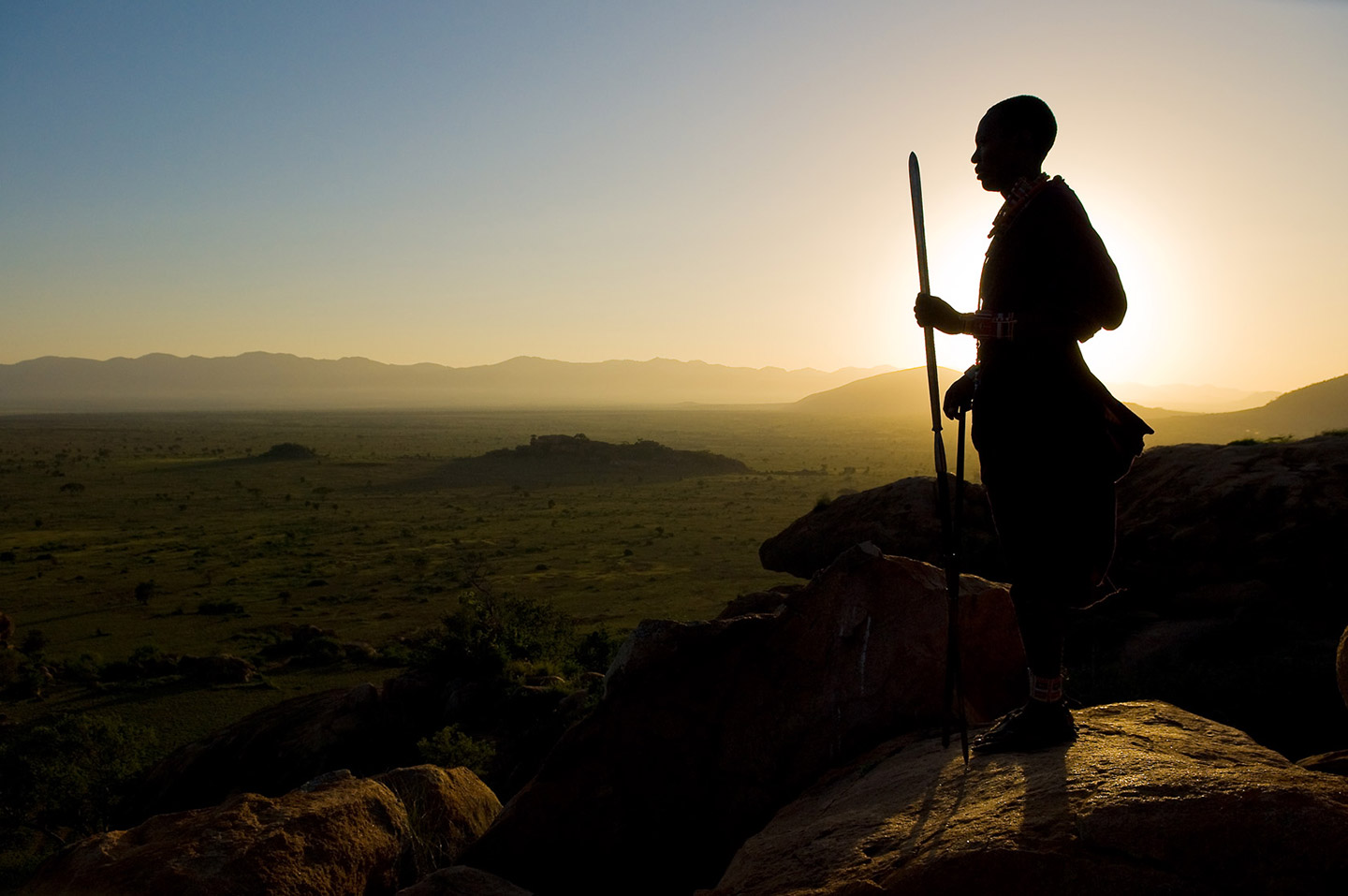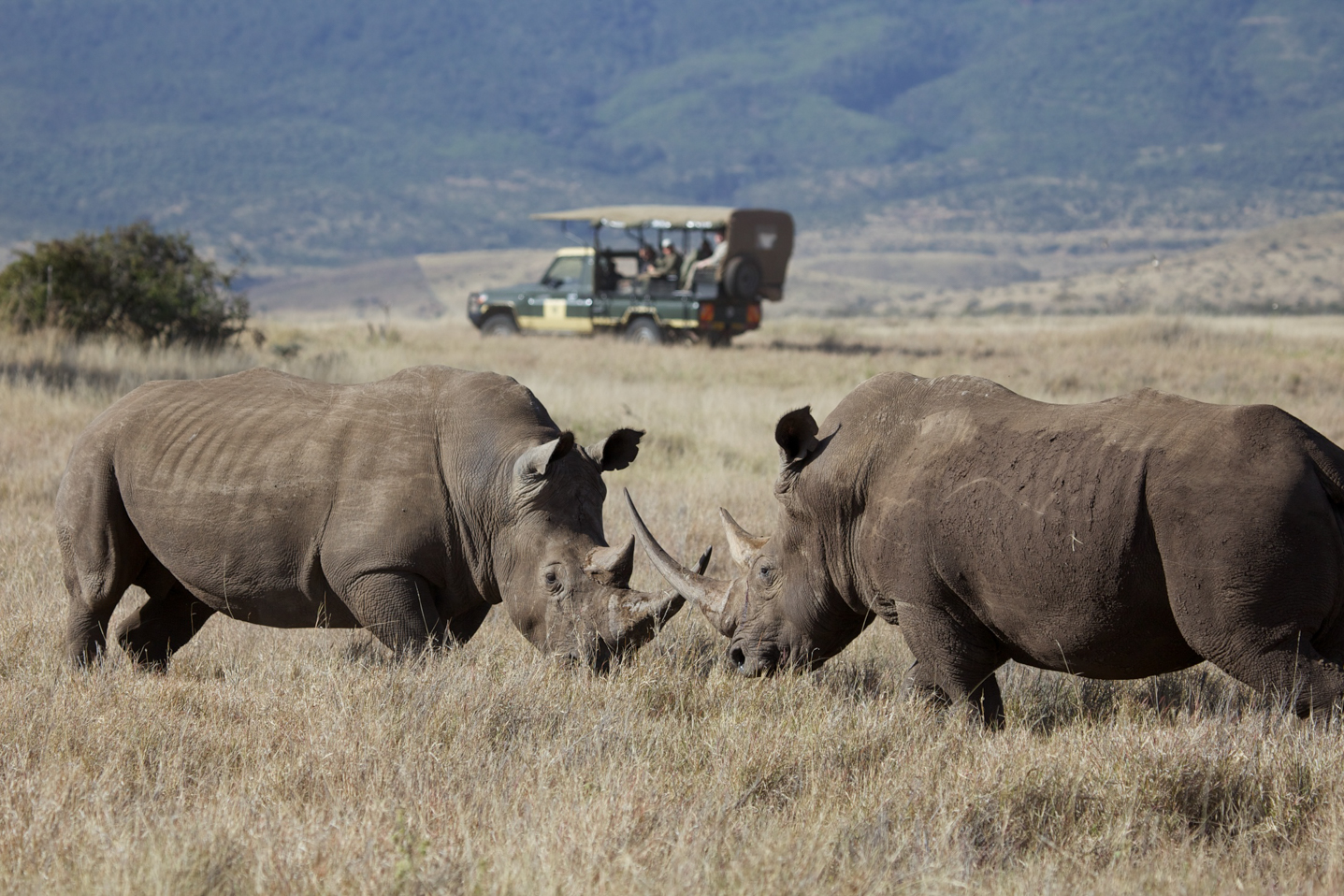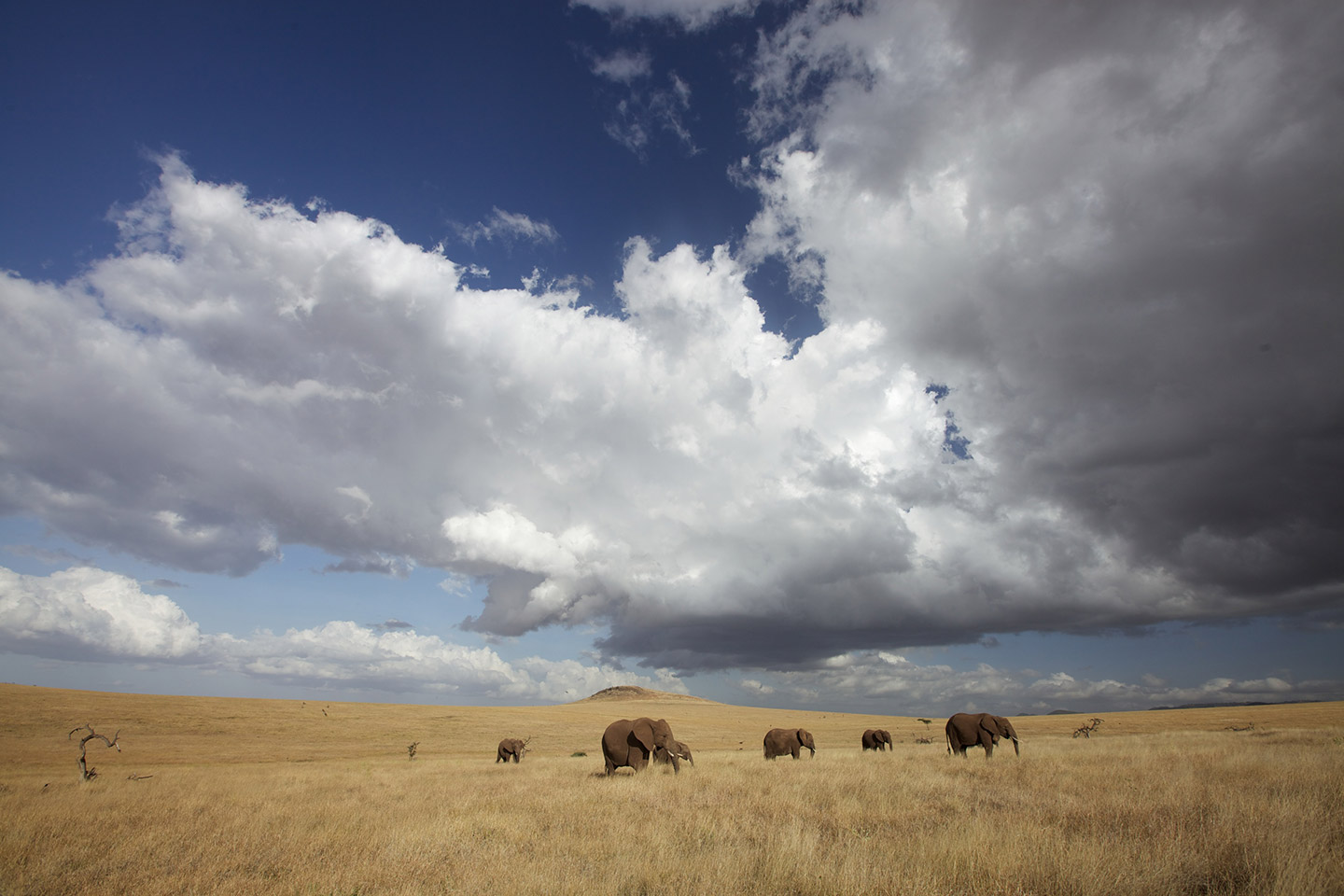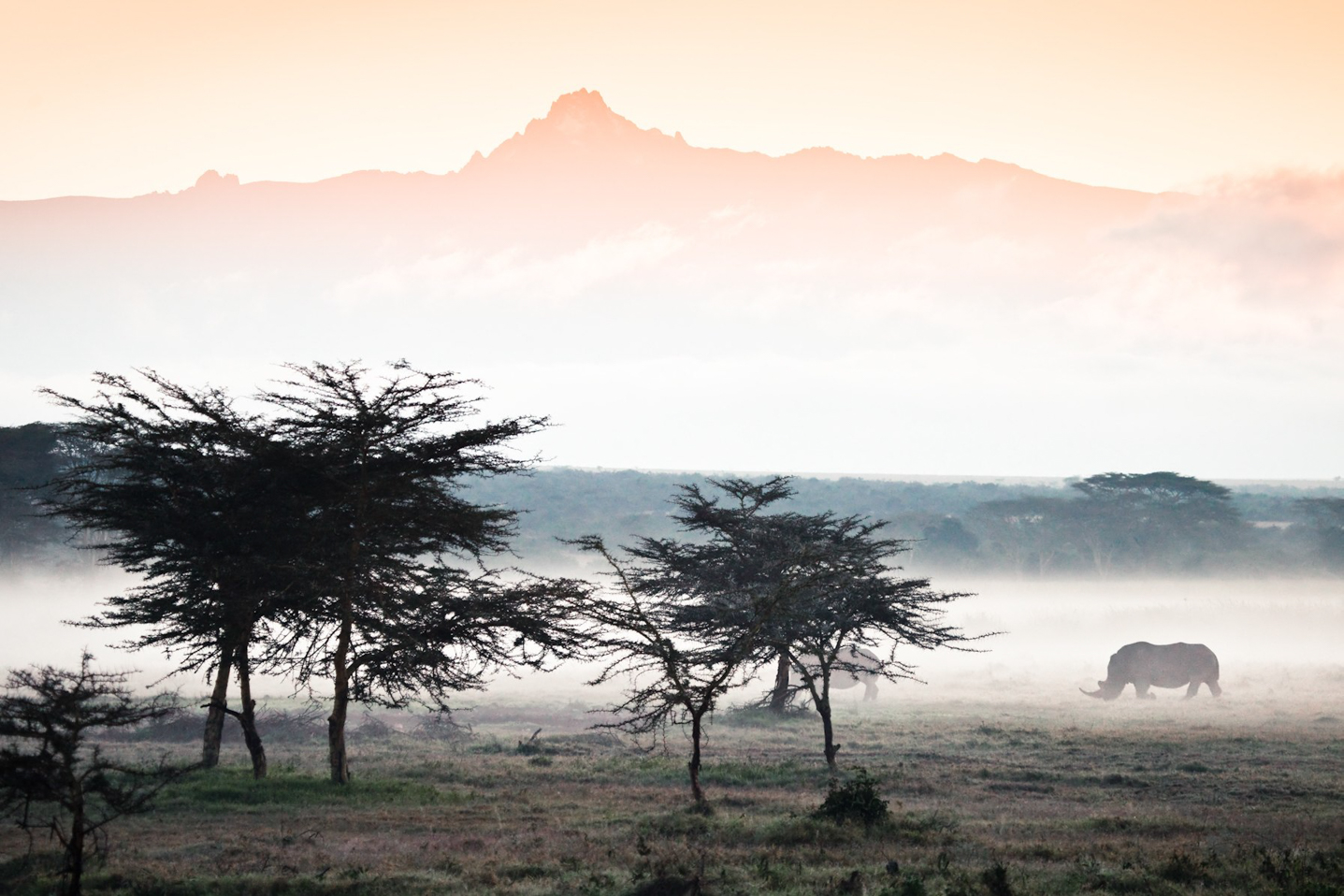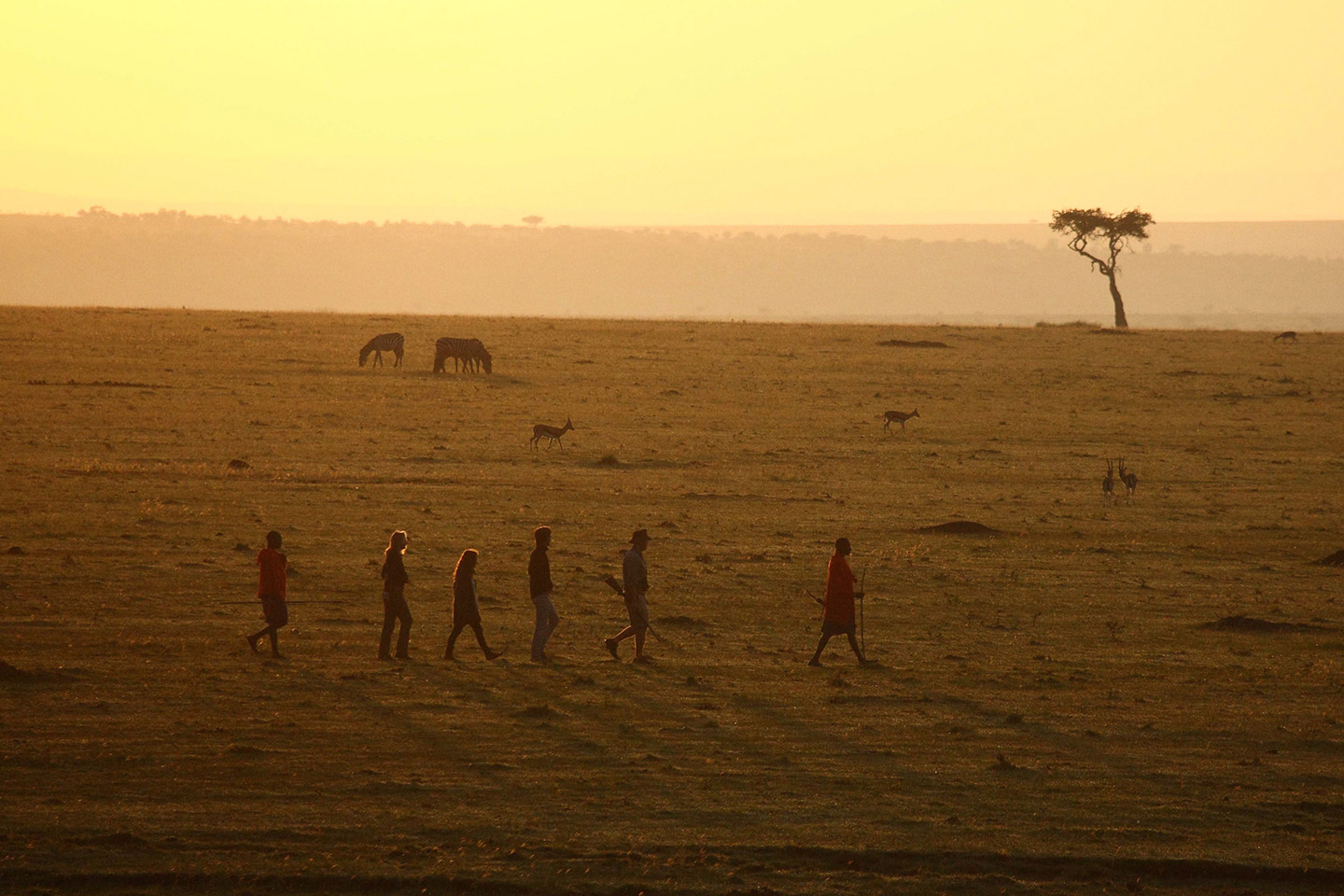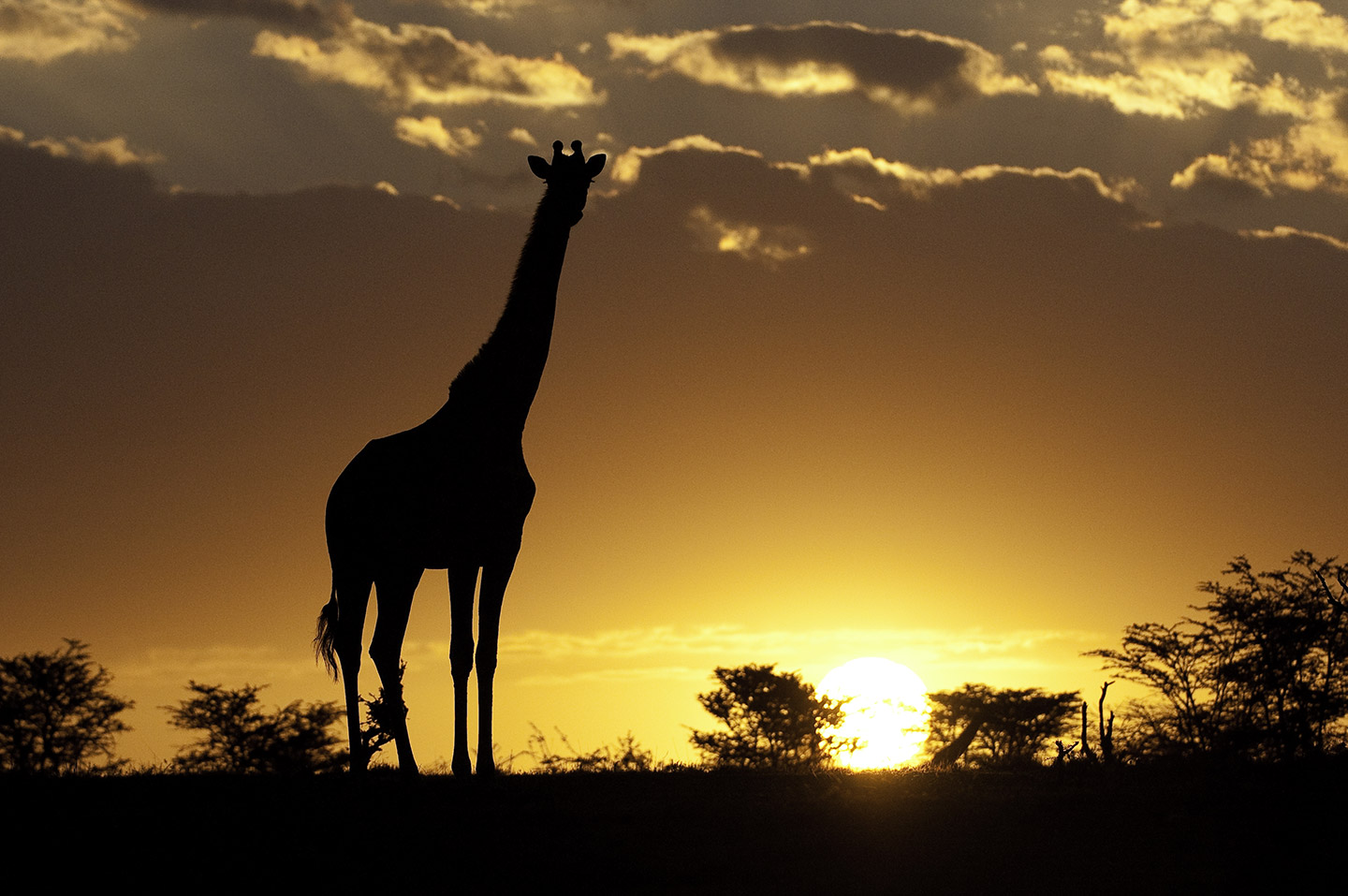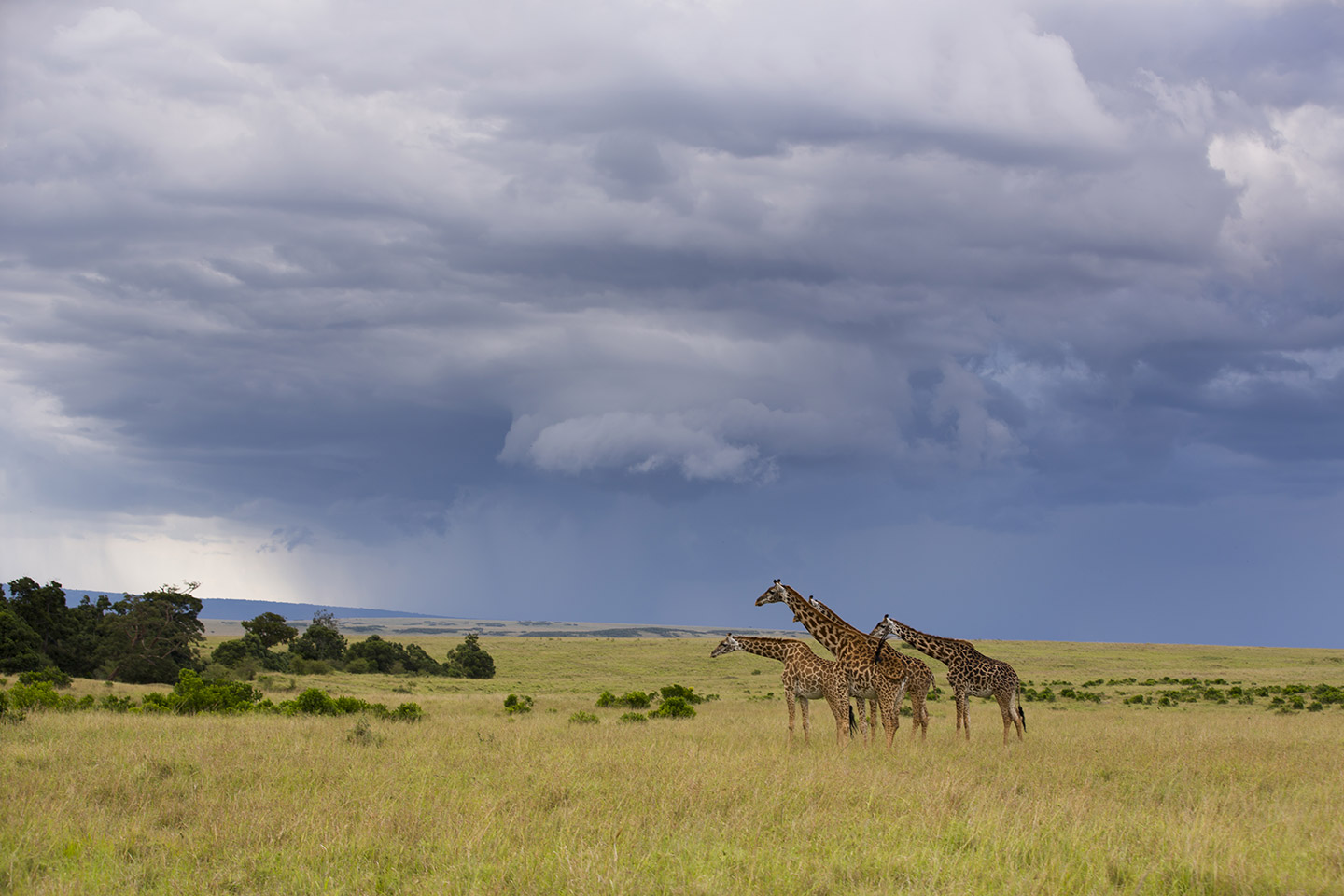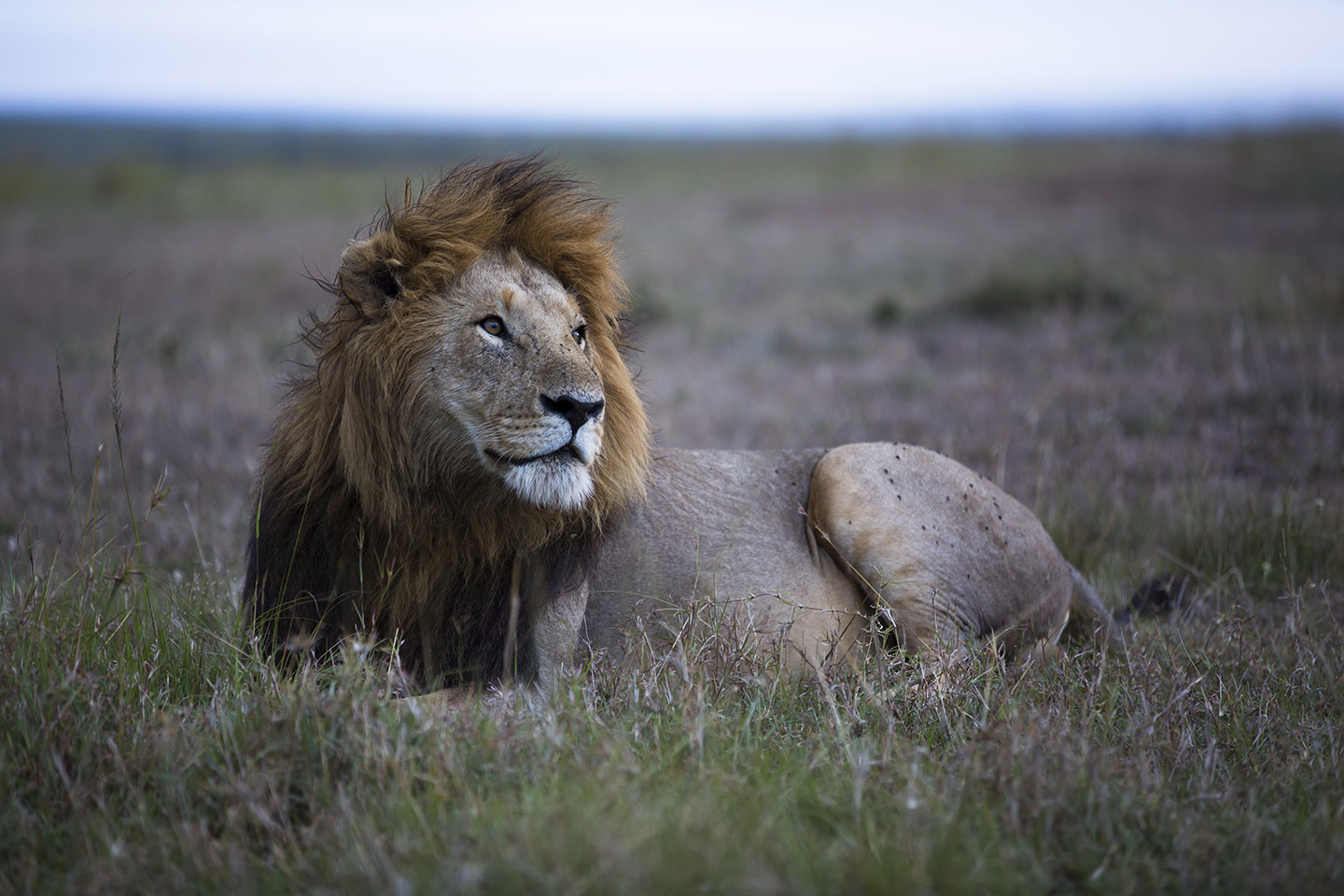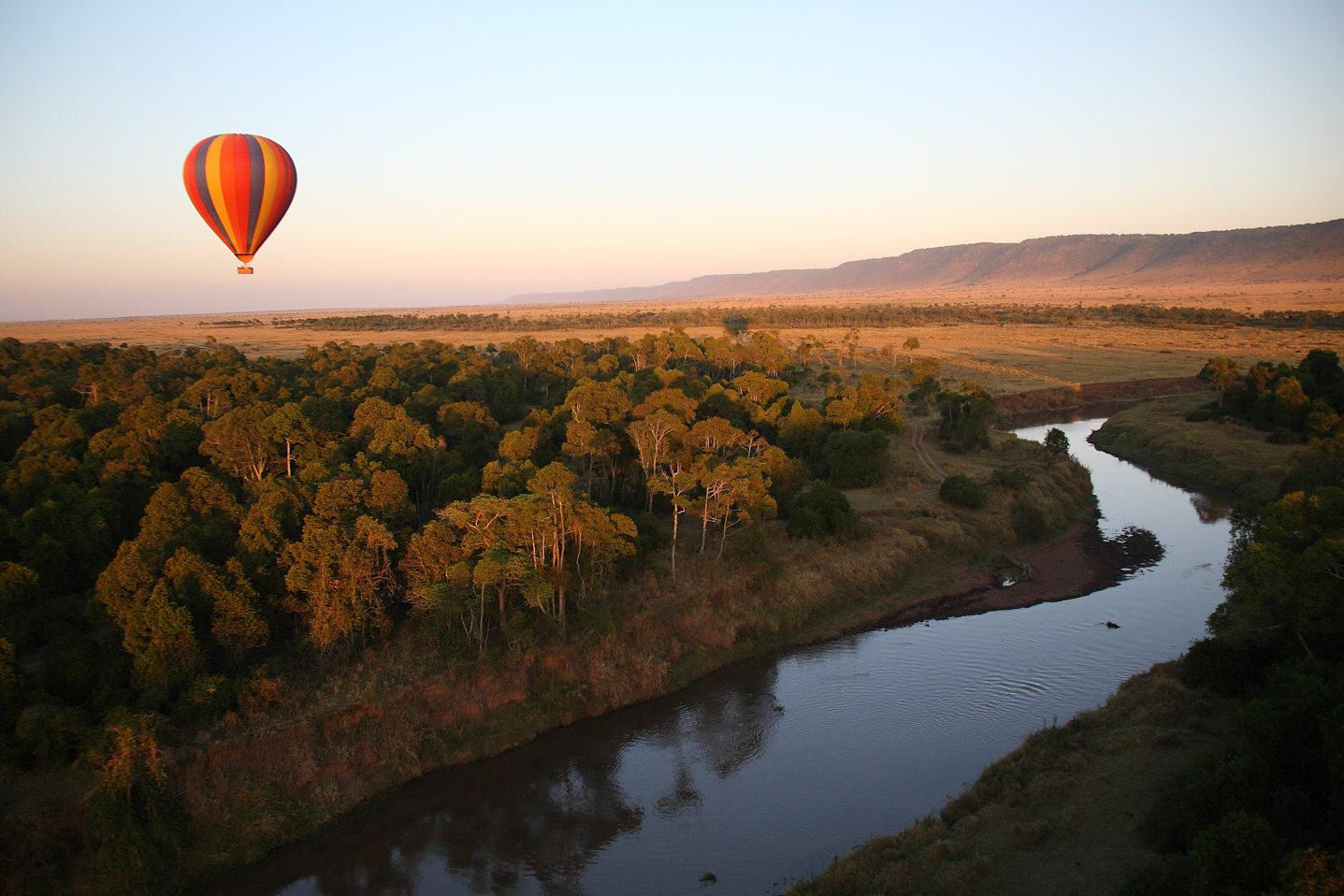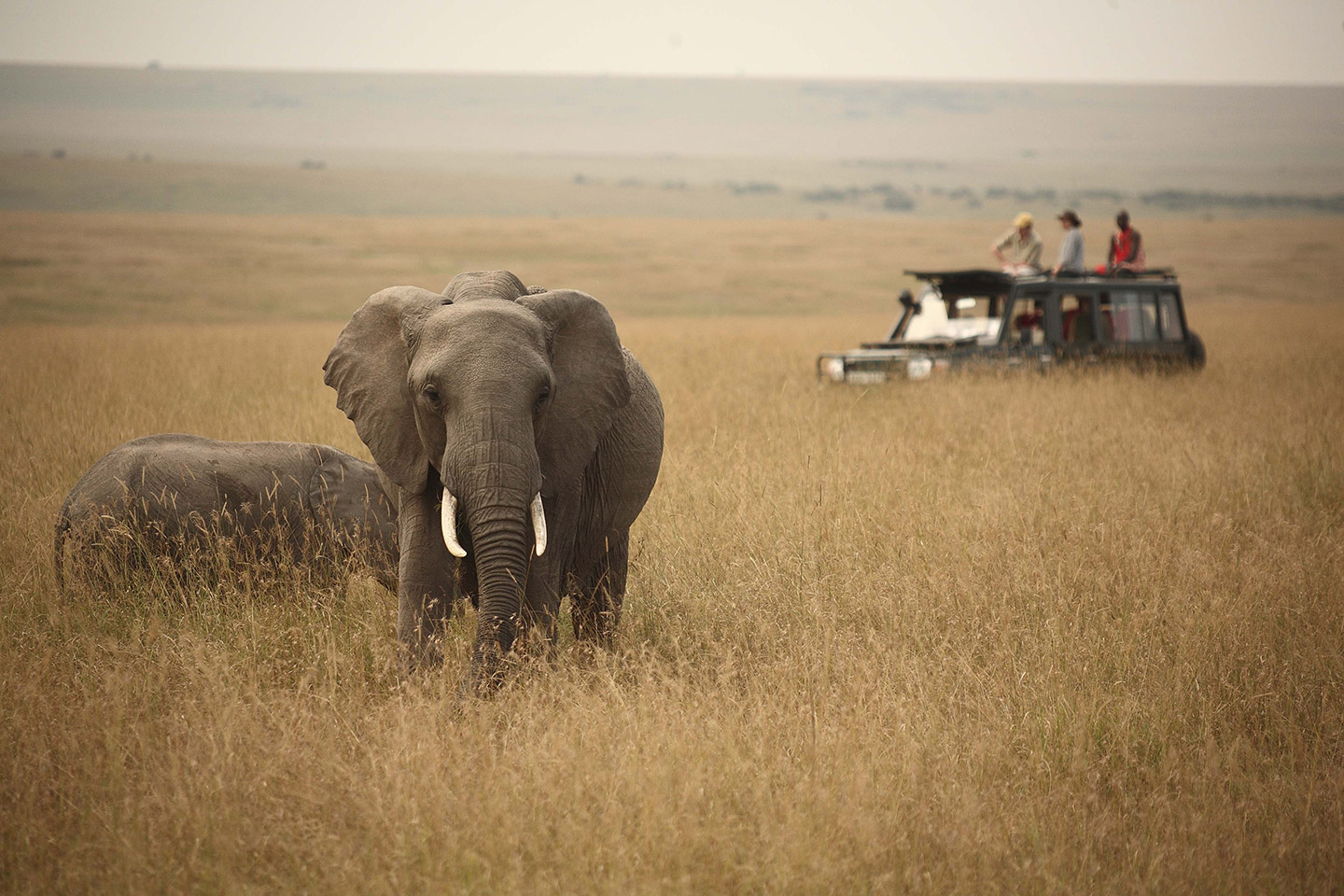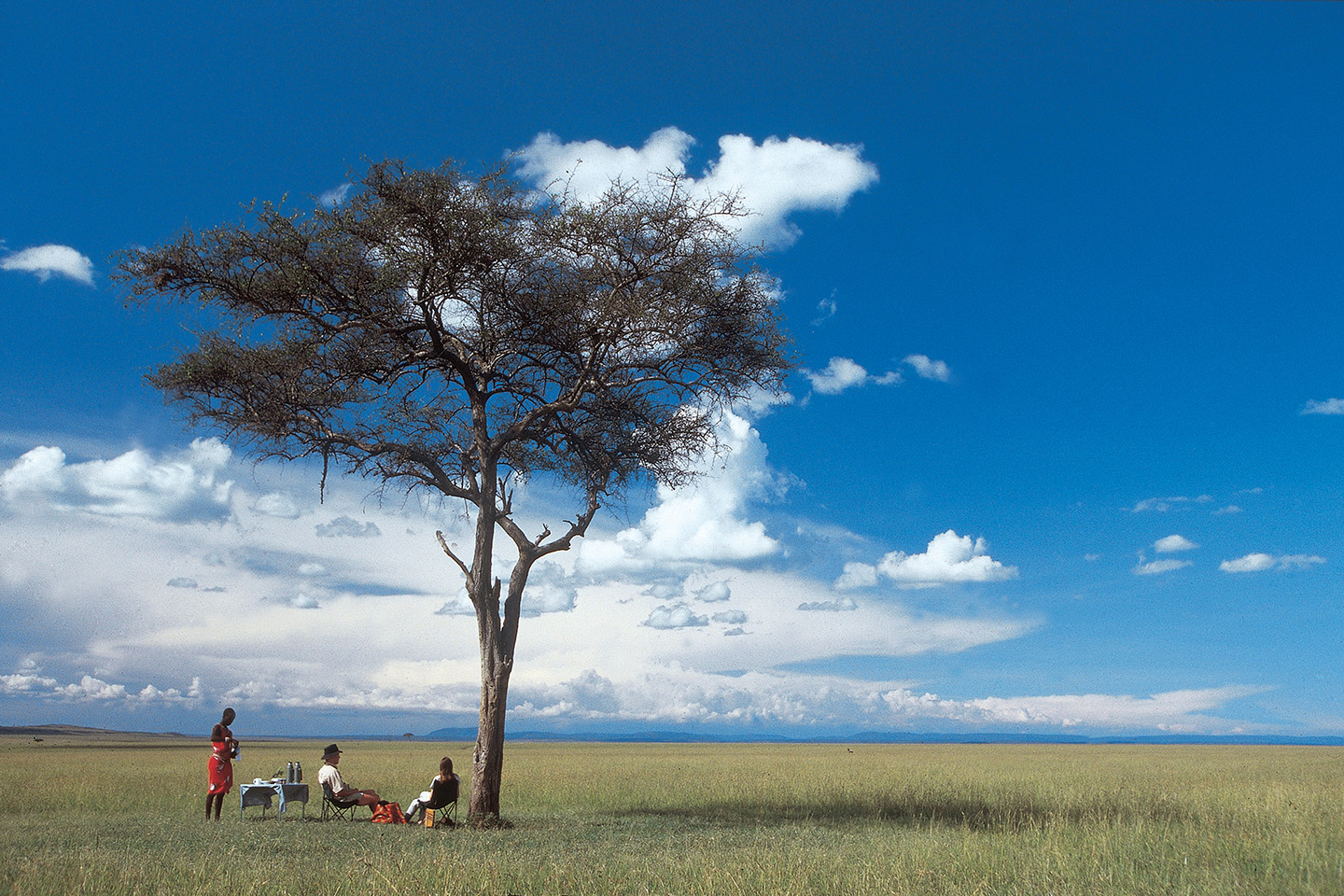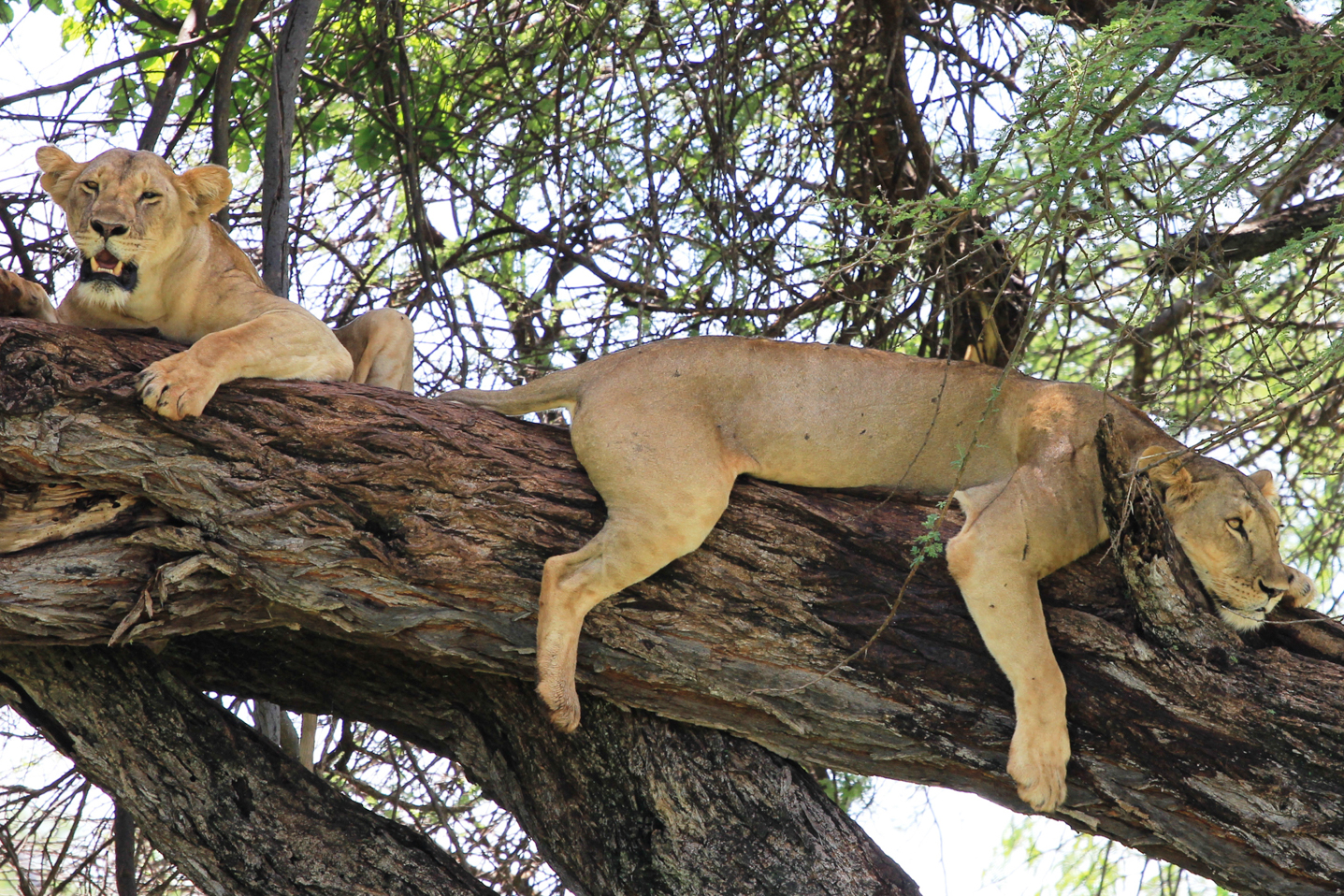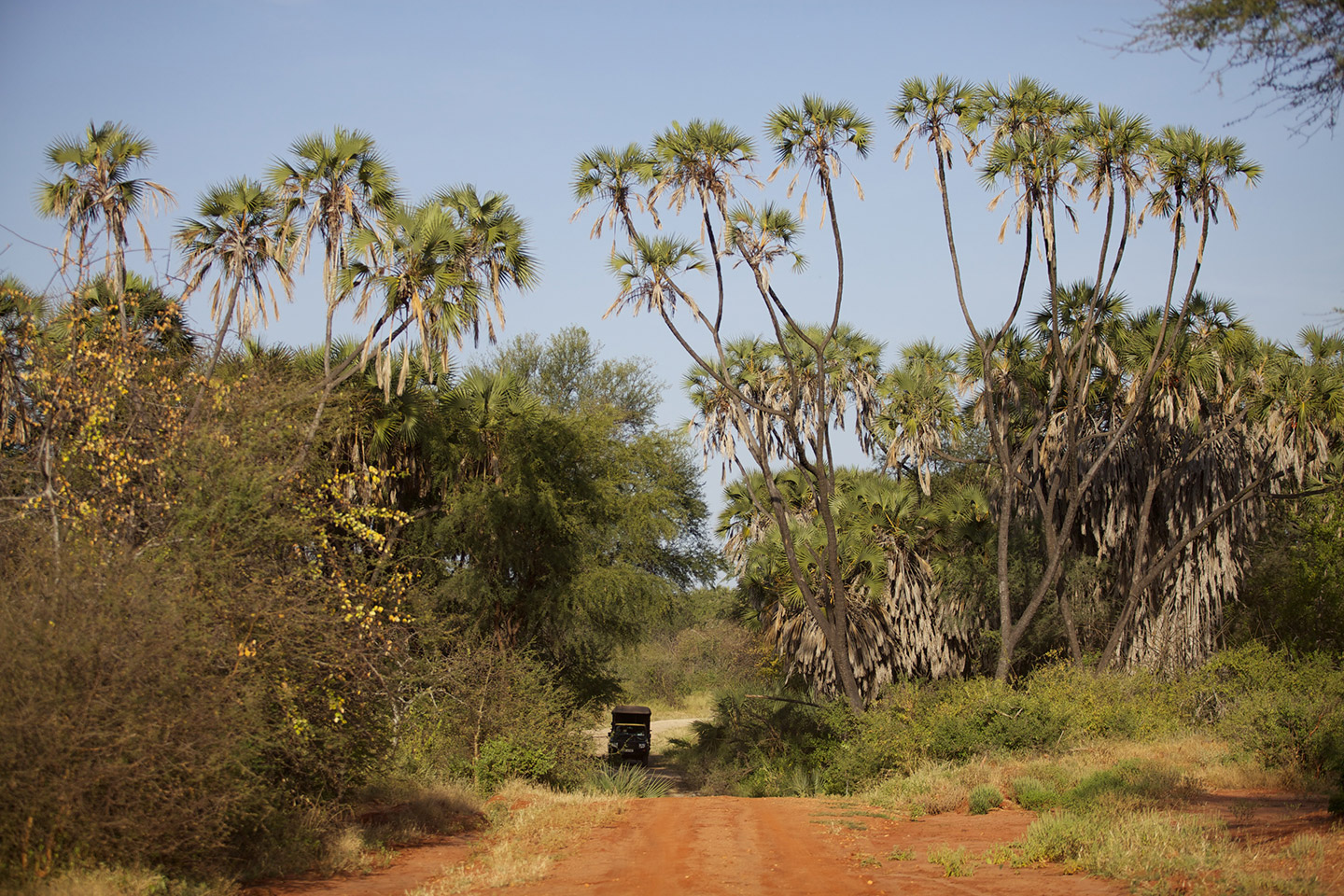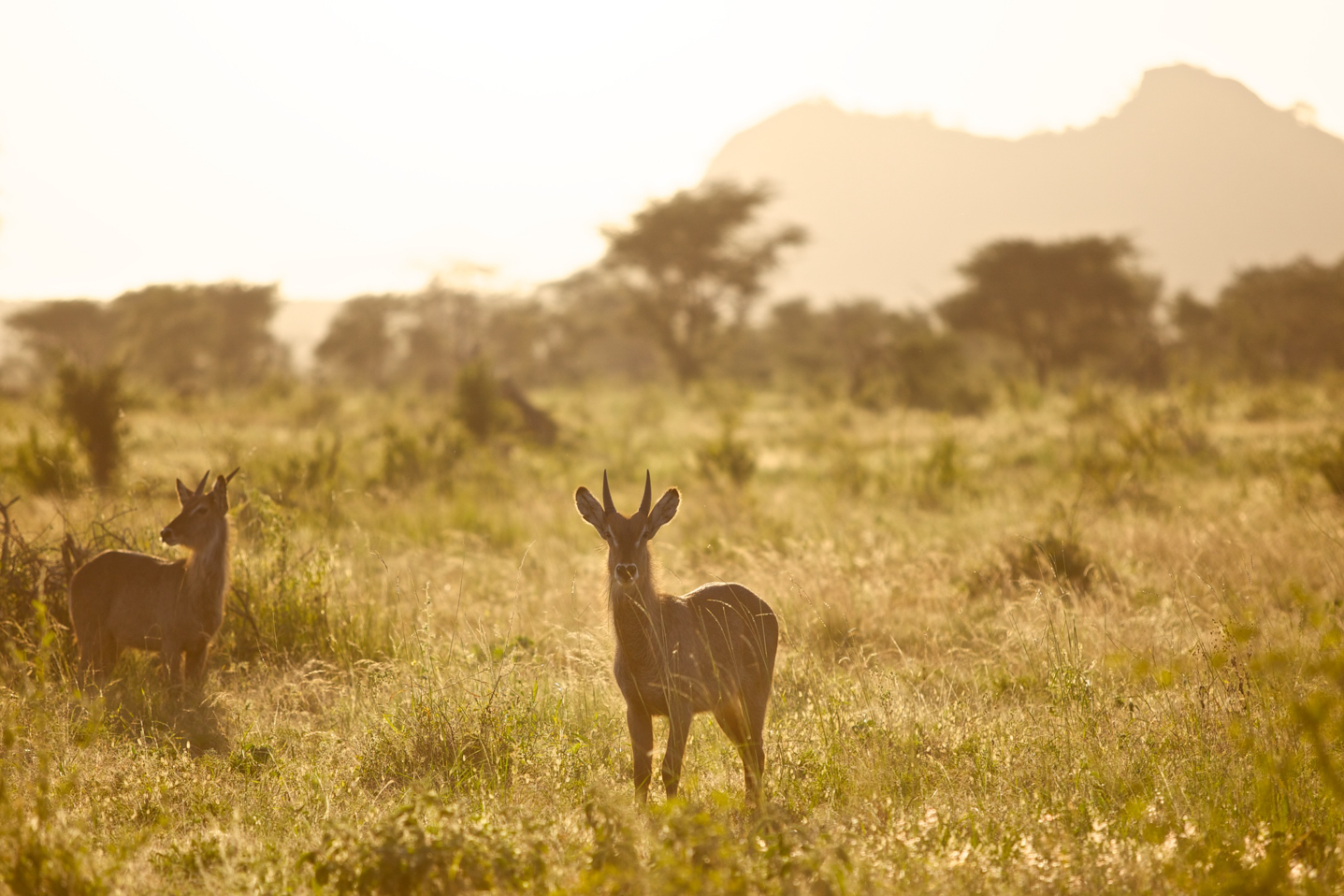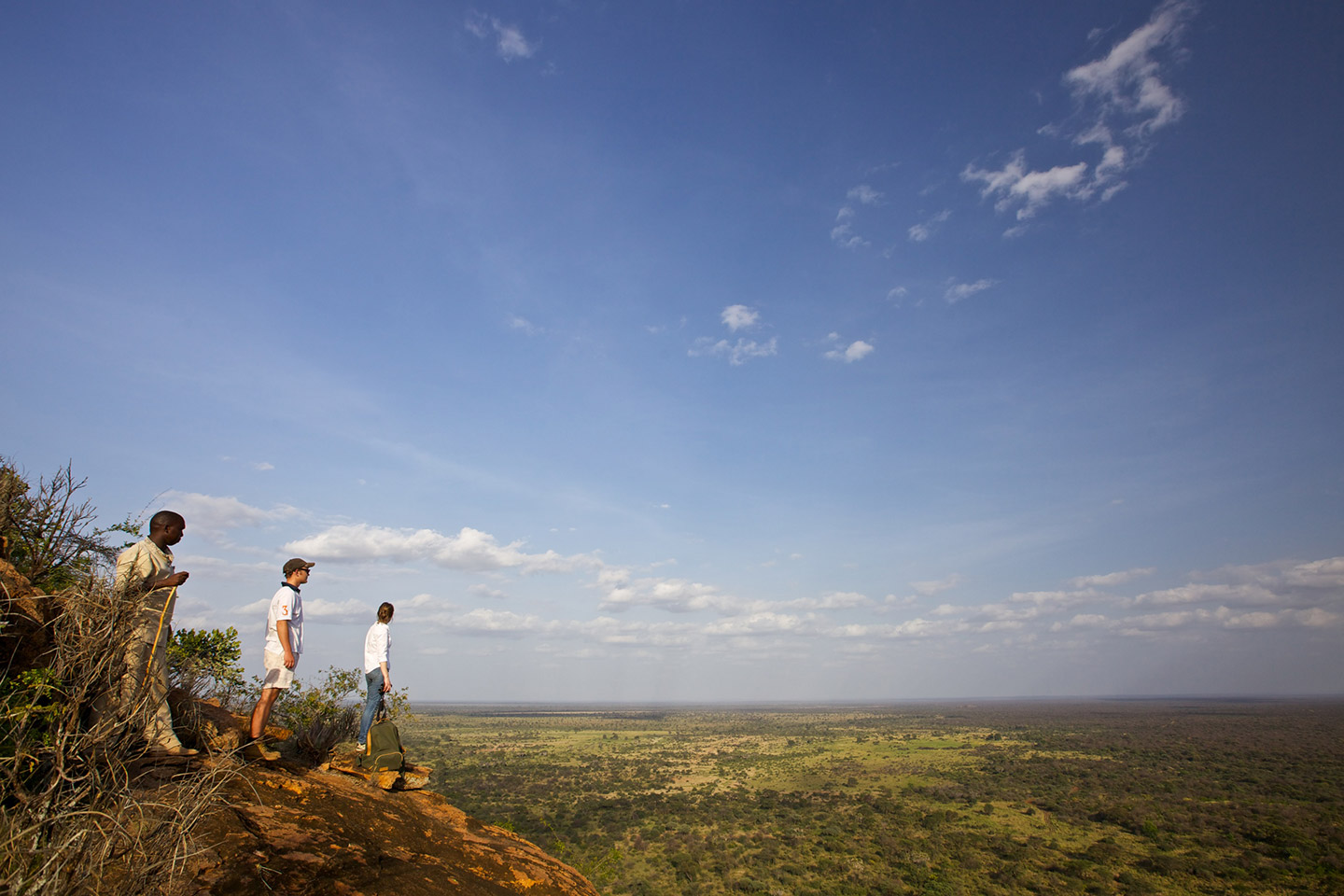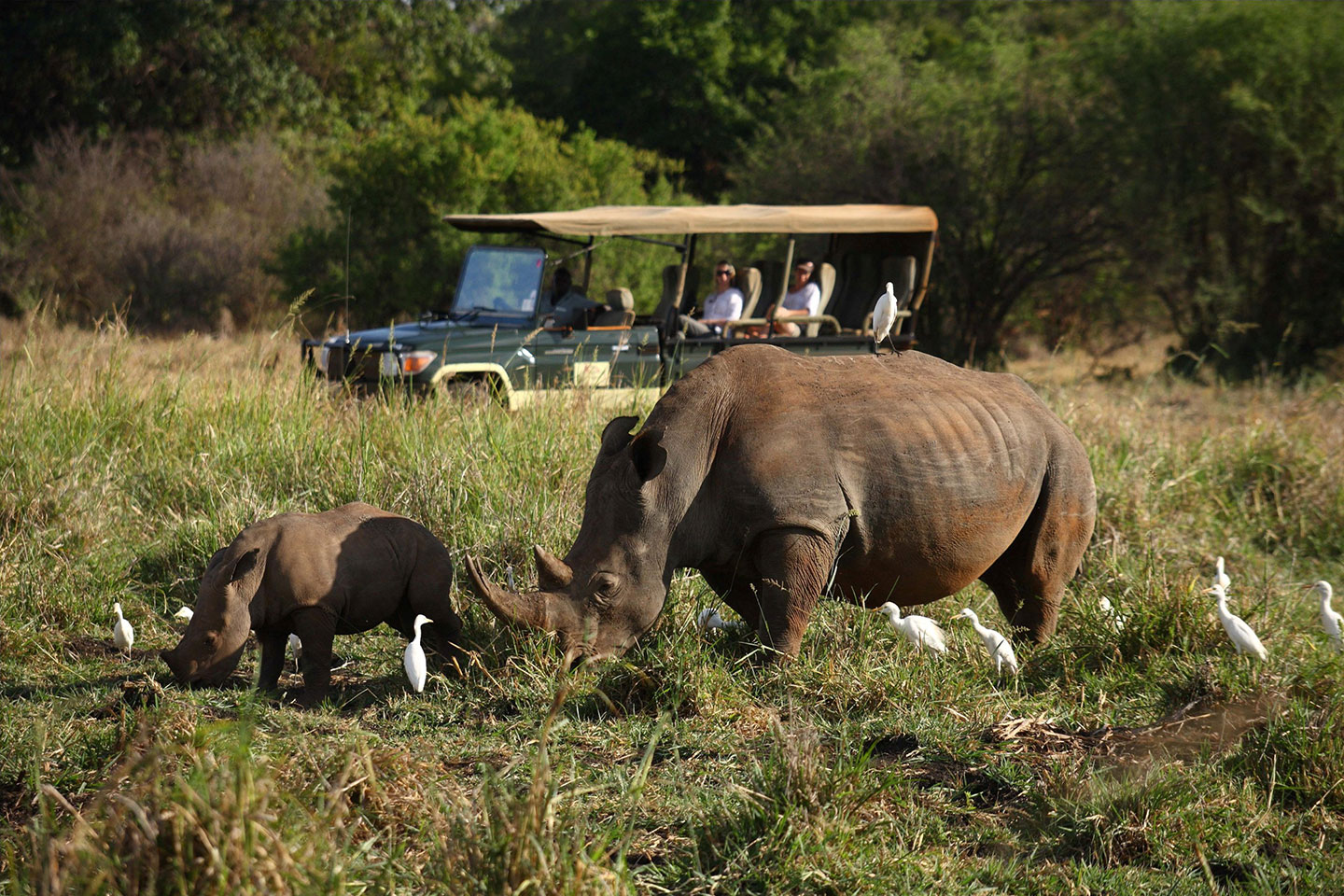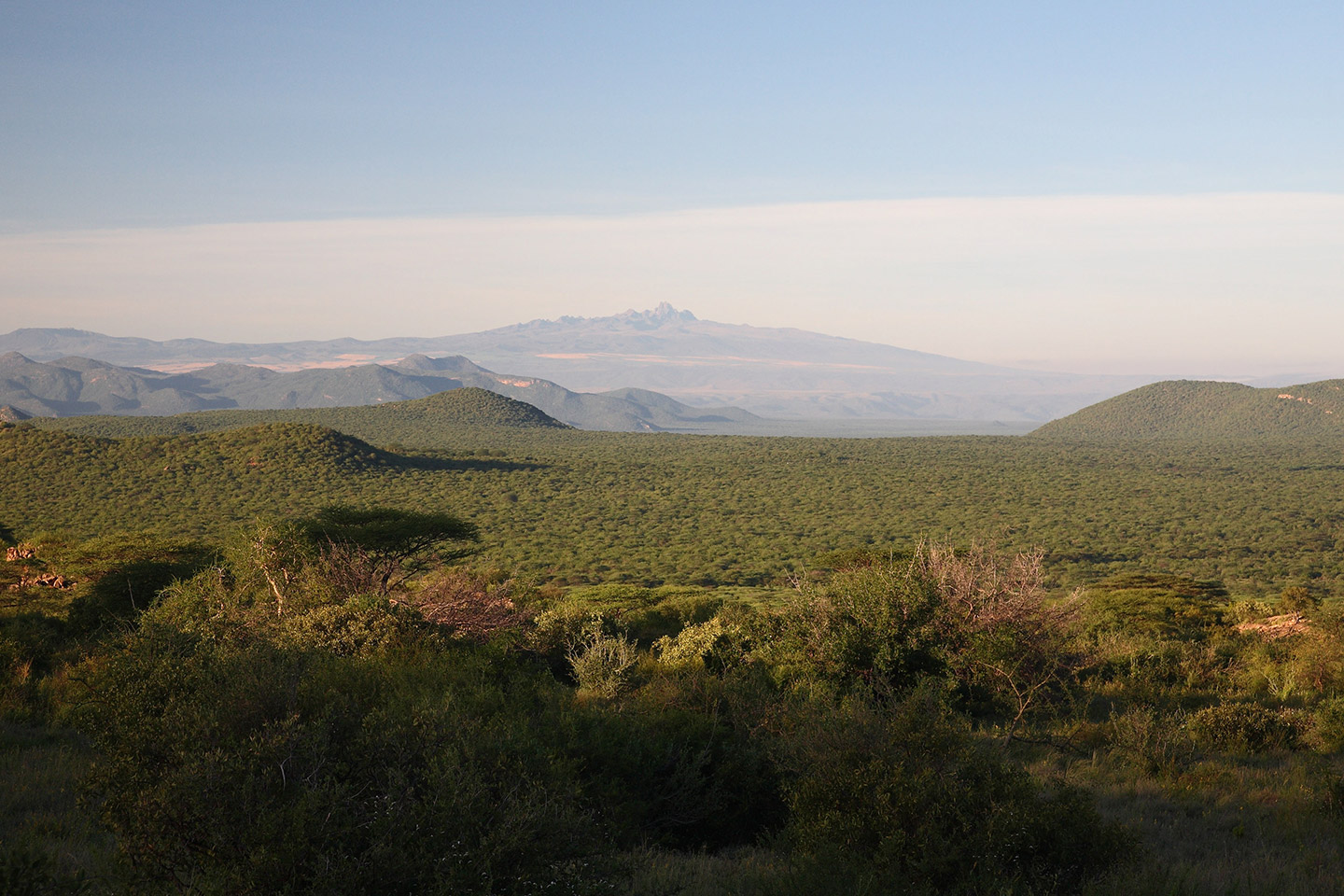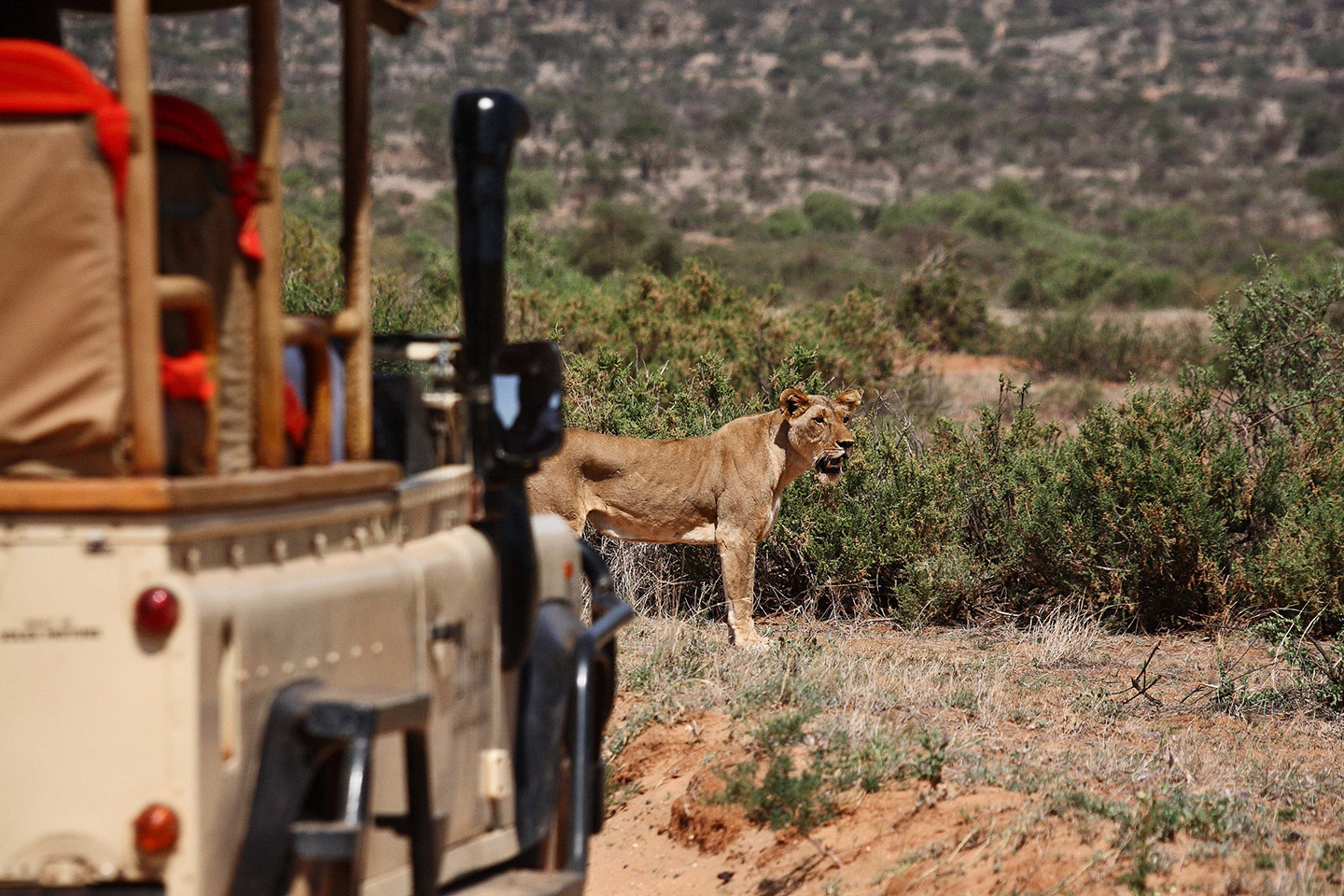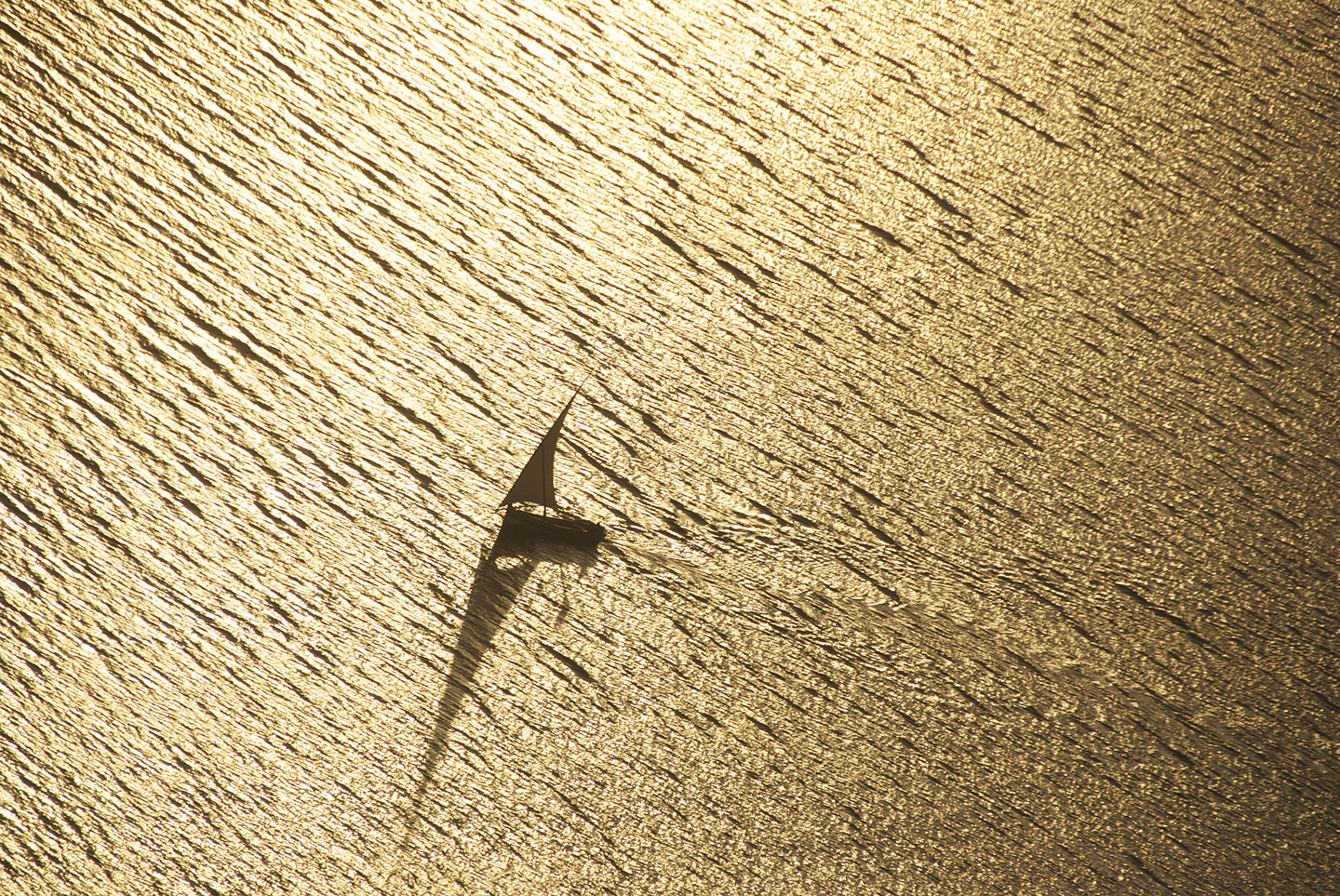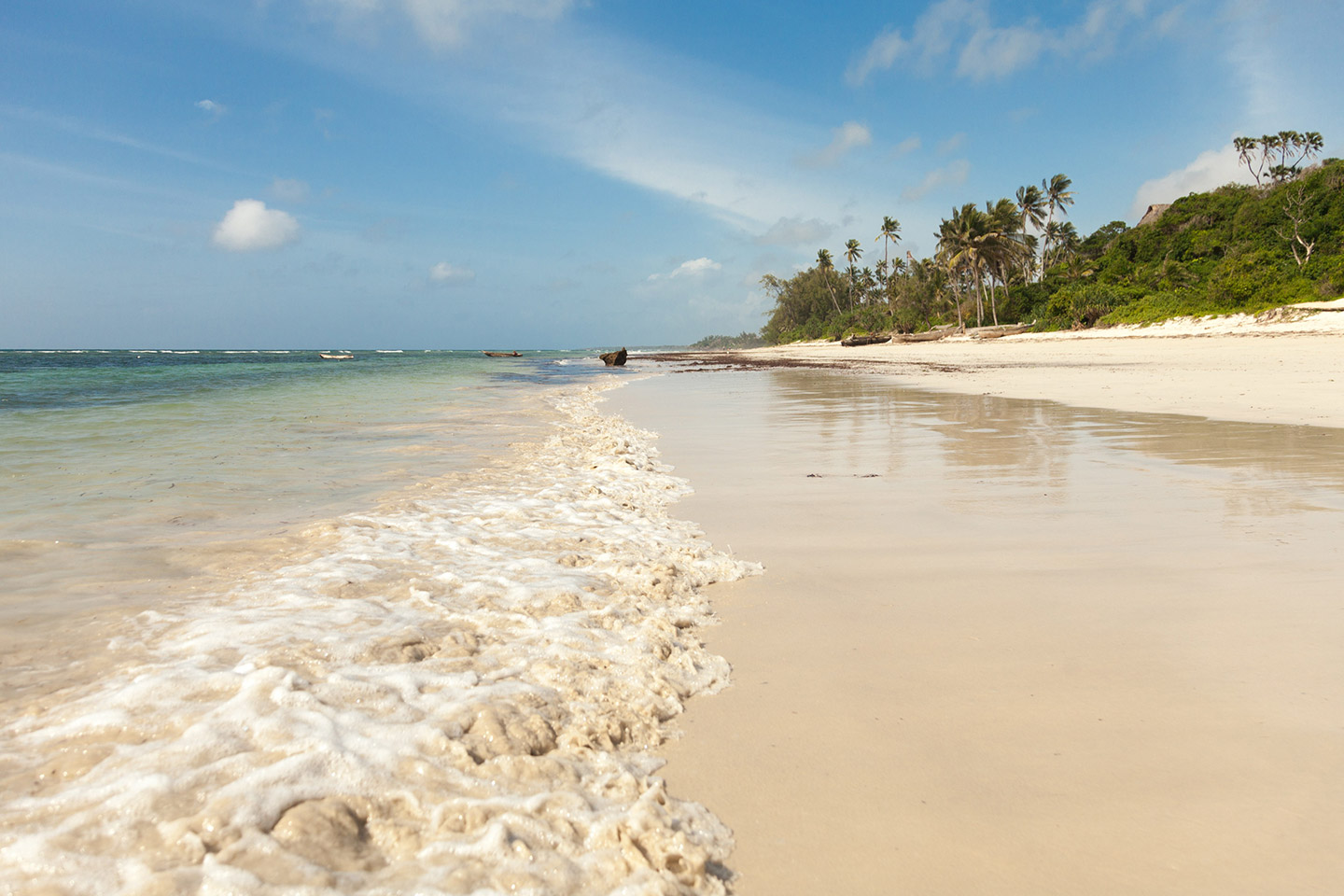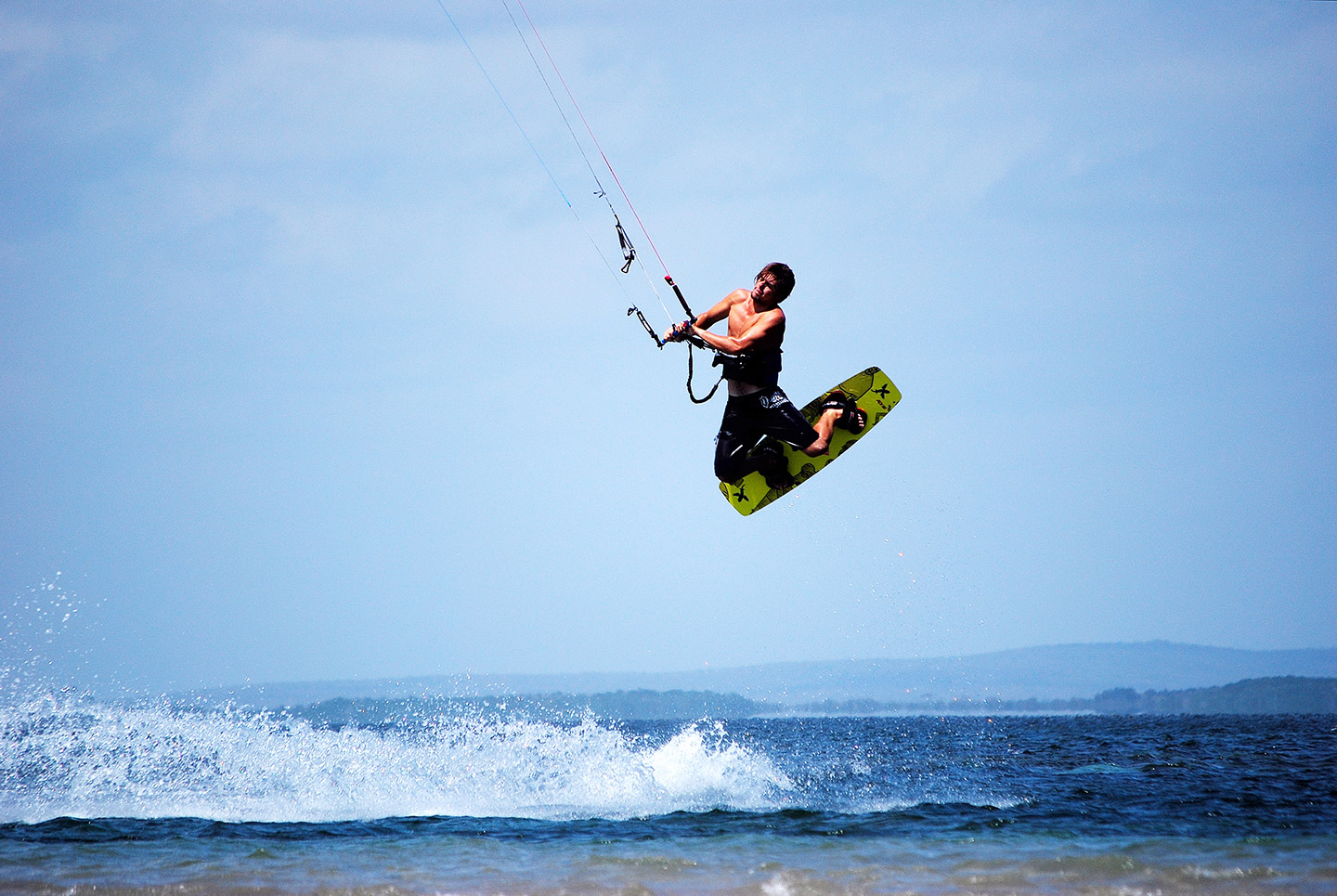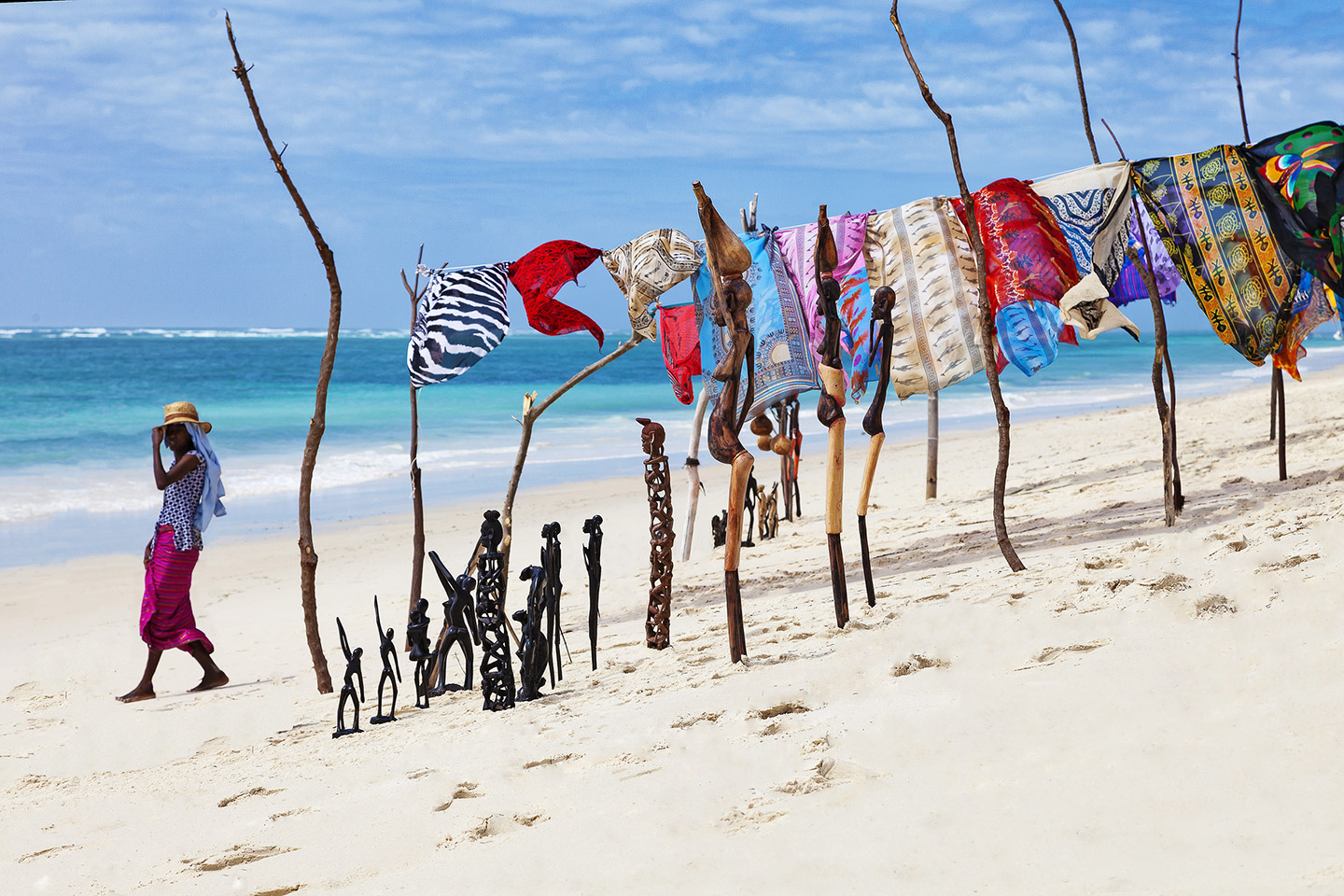Kenya is a country with a complex geography that extends across the Equator and overlooks the Indian Ocean. West of the long coastal strip inland plateaus are divided from North to South by the Rift Valley, a massive geological formation that twenty million years ago has reshaped the landscape of Kenya. The basin of the Rift Valley is occupied by Lake Turkana and other alkaline lakes, while on either side several volcanic massifs arise including Mount Kenya, the second highest mountain in Africa after Kilimanjaro.
Kenya features an incredible variety of ecosystems and a unique biodiversity, protected by a network of over 50 national parks and reserves such as the Maasai Mara National Reserve, the kingdom of the “Big Five” and the theatre of the great wildebeest migration. However, it’s in non-protected areas, which cover 90% of the territory of Kenya, where the toughest game for conservation is played. The most surprising results come from private conservancies such as those of Laikipia, where the numbers of wildlife are constantly growing. Inhabited by a variety of people equal to that of its territories, Kenya is home to more than 40 ethnic groups, including the Kikuyu, the Turkana and the Maasai, who in rural areas continue to live according to their traditions, in close communion with nature. In the last hundred years Kenya has attracted adventurers and explorers, such as Churchill, Roosevelt, Selous, Finch-Hatton, Blixen and Hemingway, charmed by its scenic landscapes and its extraordinary wildlife. Here, even today, you can relive the excitement of safari as it used to be once upon a time.
Amboseli and Chyulu Hills
Famous for the big tuskers and for the scenic views of Mount Kilimanjaro, the Amboseli National Park covers about 400 km² South of Nairobi. It features a wide variety of habitats, from wetlands to open plains, which are home to large herds of elephants, buffalos, zebras and wildebeests, as well as several predators. North-East of the Amboseli, the Chyulu Hills form one of the world's youngest mountain ranges and stretch for over 100 km between Amboseli and Tsavo, creating some of the most iconic and picturesque landscapes in Africa.
Laikipia
The region of Laikipia covers over 8,000 km² from the slopes of Mount Kenya to the Rift Valley. The Laikipia Plateau is a patchwork of farms, reserves and private conservancies such as Lewa, featuring breath-taking sceneries and spectacular wildlife. Thanks to pioneering conservation projects, the region is home to the second largest elephant population and half of rhinos in Kenya, and also the number of lions and African wild dogs is growing. Laikipia is the only place in Africa where endangered species are thriving.
Maasai Mara Conservancies
On the northern border of the Maasai Mara National Reserve part of the Maasai land was converted into conservancies dedicated to ecotourism. A successful model which has benefited all the stakeholders: the Maasai community, the tour operators and the ecosystem. Access to the 8 conservancies is limited to the guests of the few small camps, which have to comply with strict rules and offer activities such as night game drives and walking safaris, forbidden in the National Reserve. This makes it for a more intimate and exclusive safari experience.
Maasai Mara National Reserve
The Maasai Mara National Reserve covers over 1,500 km² in the South-western corner of Kenya, on the border with Tanzania and the Serengeti, with which it forms a single ecosystem. The Maasai Mara is one of the most famous reserves in the world and an icon of African safaris also thanks to the great wildebeest migration. Every year, between July and October, over a million wildebeest invade the open plains of the Mara in search of green pastures. However the Reserve hosts all year round diverse and abundant wildlife.
Meru National Park
Created in 1968, the Meru National Park covers about 870 km² in the northeast of Mount Kenya. The park features an extraordinary biodiversity and variety of habitats, to which 13 permanent rivers contribute. The abundance of water is the lifeblood of the park’s wildlife: elephants, buffalo, reticulated giraffes, Grevy’s zebras, several species of antelope and big cats. A population of over 70 white and black rhinos is protected in a sanctuary. The Park owes its fame to iconic naturalists George and Joy Adamson.
Samburu National Reserve
North of Laikipia, the Samburu National Reserve covers 165 km², featuring different habitats and unique wildlife. The banks of the Ewaso Nyiro River are lined with doum palms and acacia forests, while the rest of the reserve is semi-arid. The Reserve hosts the “Samburu Five”, five endemic species that can be seen only in Northern Kenya: reticulated giraffe, Grevy’s zebra, oryx beisa, Somali ostrich and gerenuk. Samburu is the name of the nomadic people who inhabits this area, herding their cattle and camels.
The coast and Lamu Archipelago
The sandy coast on the Indian Ocean stretches for nearly 500 km between Somalia and Tanzania. It is known for its crystal clear waters, idyllic islands and colorful coral reefs. The city of Mombasa is the gateway to some beautiful beaches and parks: Watamu Marine National Park and Kisite Marine National Park are home to green turtles, hundreds of fish species, dolphins, whales and whale sharks. The coast is also a place rich in history: the town of Lamu, in the namesake archipelago, is the oldest Swahili settlement of East Africa.
